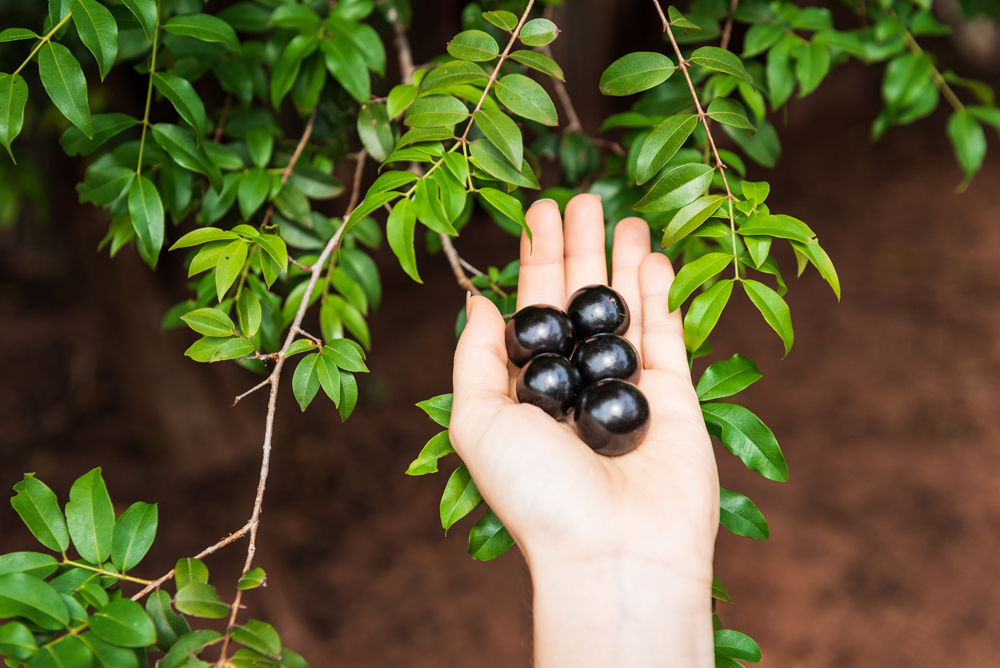The modern cosmetics industry faces an increasing demand for natural, multifunctional dermocosmetic formulations, especially those that offer antioxidant and photoprotective benefits. Traditional synthetic ingredients often raise concerns regarding their environmental impact and potential health effects, driving a shift towards sustainable, plant-based alternatives. A significant issue in this context is the vast amount of agro-industrial waste, which often contains valuable bioactive compounds that are discarded. Jaboticaba (Myrciaria cauliflora), a Brazilian fruit, exemplifies this challenge and opportunity. Its peels and seeds constitute 40-50% of the fruit’s weight and are typically discarded during the production of juices and other beverages. However, these by-products are known to be rich sources of nutrients, vitamins, minerals, and biologically active substances such as anthocyanins, flavonoids, and tannins, which exhibit antioxidant, anti-inflammatory, and antiproliferative effects. This systematic review considered the potential of utilizing these abundant jaboticaba peel extracts as a natural and sustainable solution for developing dermocosmetic formulations to protect skin tissue against damage induced by ultraviolet radiation (UVR).
Key Findings
• Research Focus: The review highlighted research concentration in three primary areas: (1) extraction methodologies for bioactive compounds, (2) identification and quantification techniques, and (3) evaluation of biological activities, particularly antioxidant and photoprotective effects.
• Dominant Bioactive Compounds: The most frequently reported compounds in jaboticaba peel extracts were anthocyanins (specifically cyanidin-3-glucoside and delphinidin-3-glucoside), quercetin-derived flavonoids (such as rutin and myricetin), and phenolic acids (including ellagic, gallic, and ferulic acids).
• Synergistic Potential: These identified compounds have been shown to exhibit synergistic effects when combined with conventional UV filters, enhancing overall efficacy and stability in photoprotective formulations.
• Efficient Extraction Methods: Ultrasound-assisted extraction (UAE) using ethanol and emerging green solvents like glycerol and deep eutectic solvents (DESs) was identified as an effective and sustainable method for recovering bioactive compounds. The choice of acid and pH value in the extraction solution is crucial and must be optimized for specific compound yields.
• Antioxidant Activity Prominence: “Antioxidant activity” emerged as the most frequently occurring term in the reviewed articles, demonstrating a strong correlation with UV radiation, sunscreen, SPF, photoprotection, and oxidative stress. Many studies employed multiple methods to assess antioxidant capacity.
• Photoprotective Efficacy Assessment: In vitro UV/VIS spectrophotometry, particularly the Mansur method, was commonly used for preliminary screening of photoprotective potential. However, there is a scarcity of in vivo SPF determination studies due to higher costs, logistical demands, and the need for volunteers.
• Geographic and Topical Research Gap: While there is increasing evidence for the dermocosmetic potential of jaboticaba peel, studies specifically investigating its direct application in topical formulations remain scarce, with only one identified investigation using it in a topical formulation. Brazil is the leading country in jaboticaba-related research.
The future implications of this research are substantial. To fully realize the potential of jaboticaba peel in dermocosmetics, future research should prioritize standardizing extraction and quantification methods to enable more consistent cross-study comparisons. Crucially, there is a need to expand biological assays to include validated in vitro and in vivo photoprotective tests, moving beyond preliminary screenings. Ultimately, developing and evaluating dermocosmetic formulations incorporating jaboticaba peel extracts and conducting clinical studies to establish their safety, efficacy, and user acceptability are essential steps. By focusing on these areas, the valorization of jaboticaba peel, an agro-industrial waste, can contribute meaningfully to the development of sustainable, effective, and environmentally responsible cosmetic products, aligning with the principles of the circular economy.
Link to the study: https://www.mdpi.com/2079-9284/12/5/182

